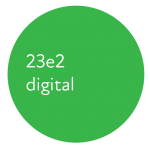Conversion Rate Optimization

Some visitors may click on your website just to go back to the results page without even clicking anything on your website. A limited amount of visitors will make it hard to maintain your site. The ultimate goal is to turn them into customers. For this to be possible, you must create a bond between your website and your visitors.
For example, maybe you want to turn a one time buyer to a regular customer that buys often.
There is actually an effective way to do just that. It is called Conversion Rate Optimization (CRO). CRO uses a scientific method of optimizing websites and getting more customers.
Before we get into it, you need to know what it really is.
What is Conversion Rate Optimization (CRO)?
Conversion Rate Optimization It is the process of turning web visitors into customers/leads by completing an action on your website, such as filling out a form.
By turning your visitors into customers/leads you can convince them to:
- Buy your product or service
- Download/register for relevant content from your website (e.g. a blog)
- Contact your business for inquiries
- Refer your product/service to their friends
There are many different ways to increase the conversion rate. For example, you change up the design of your website to make it more appealing to customers. These conversions can take place anywhere on your website, including your landing page, homepage, blog (etc.). All of the pages on your website can be optimized for a higher increase in conversions.
Questions you should ask about your website:
- Does my site promote my product/service effectively?
- Are my web pages appealing to visitors?
- Does my homepage have a call to action?
- Is my site easy to navigate through?
Here is how each webpage can help increase conversions:
Homepage
Blog
Landing Pages
Other ways to increase conversion:
- Allow people to network with you on different social media platforms
- E.g. share your contact information and social media on your website homepage
- Determine if there are any reasons why your product/service is not being bought
- E.g. The product/service price could be too high or the website lacks credibility
- Display your company achievements and credentials on your home page
- This is to show your website visitors that your company is reputable and that is has a strong track record

Testing
A/B Testing
This first test is commonly known as a split test. This test takes two separate variations or versions of your website or landing pages. To find what is more qualified, it sends an equal amount of traffic to each version of your website. Both versions are then shown to the users. After that, it measures each version’s number of conversions. It uses a calculation that analyzes each version to see which one has generated the most conversions. You can switch to the version that has the highest conversion rate and use it for your website.
Note that all testing methods have their ups and downs. With this testing, it does not take a scientific approach to get the results. The conversion rate varies week to week, so it is hard to tell if it is from the version change or from the higher or lower number of traffic from a specific week.
For example, you may happen to get a massive amount of traffic after getting mentioned by another company. This web traffic may not be a good fit for your product that you are selling because, as the traffic increases, the conversion can go down. This may lead to lower quality in web traffic for your website.
Multivariate Testing
This type of conversion rate uses an optimization test where there are modified different variables. This test is used to examine a hypothesis. The goal of this test is to see which combination of versions is the best for your website. Doing this will improve conversion. For example, if you had a headline and an image, they would be tested for combinations. From this test, there is a baseline and variation for each element, which makes 4 variations. Out of the 4, one is chosen to be the best.
Here is that formula for this method of testing:
The total number of variations in a multivariate test:
(# of Variations on Element A) * (# of Variations on Element B) … = Total # of Variations
The process of this test is similar to the A/B Testing ( Split Test), but it is also different by many variables. In the A/B test, a minimum of one variable is tested to see the change of one variable. In the multivariate test, multiple variables are tested at the same time to see the perfect combination that is needed.
With the test, the benefits include that it can improve a single conversion goal such as clicks, sign up (etc.). If the test is done effectively, you do not have to do the A/B test because you can run one multivariate test or run multiple A/B tests with the same goal on the same page. The downside to the multivariate test is the amount of traffic that comes where it is required to get meaningful results. The number of variations can add up fast, which means the traffic for each variation is lower.
Gathering Data
Getting both qualitative and quantitative data is required before doing a test. This is because, without any data, tests are more likely to fail. Logically, it is better to spend money on data, so you can test what you have learned from the data. A lot of your tests can fail if you do not gather any data.
Qualitative and quantitative data are both equally important in testing. Quantitative is good, but numbers do not show the whole picture. On the other hand, qualitative data can help with asking your customers questions about your service or product. Also, it demonstrates why customers may not be buying your product or service. This makes it crucial to gather both types of data for testing.
The last thing is that you cannot have too much data. It is easier to find patterns across the data and find useful information that you can use for the tests. You should spend at least one-month getting data and analyzing it before doing any of the tests.
How can you gather data?
There are many ways to gather data. We have recommended a couple of options that you can use to gather the data that you may need.
Method 1: Google Analytics
The best place to start is with Google Analytics. This shows data of numbers that show how many people are using your site. While using optimization, Google Analytics is your best friend. This will help you learn about your website.
You can also learn:
- What people are doing on your website
- Impact and performance of each page, widget, and feature
- Where on the website you are losing money
There are also different ways you can use the metrics and use them for your CRO goal:

Track Website Audience
You can look at the sessions, which are the number of times that users have stayed on the website for a specific amount of time. For example, a user’s session ends in 20 mins when the user is inactive on the website. Then if you went to the website twice with 20 mins of inactivity in between, it counts as 2 visits. You should look at the number of users contributing to the website.
When it comes to new visitors, you can see how many new people have viewed your website for the first time. With the number of new visitors increasing, the website will have even more users than before. With any E-commerce website, this metric is important because it shows that you can convert new users to customers. It is also important to find out how the new visitors located your website such as through online ads, links or organically.
Here is a link with more information that will help with how the metrics will help you
Method 2: Customer Surveys
Another way you can get data is by asking your customers to do surveys on your website. After customers have bought something, registered for your website or are on a landing page, you can do a survey to see what they bought and the reason why they wanted it. There are a lot of questions that you can ask in a customer survey. These questions depend on the content of your service or product. With this, you can get a lot of data or information from customers. It can also help new customers in determining whether or not they want to purchase your product/service.
Here are tips you can use:
- Do not ask too many questions
- Customers can get annoyed with a long survey. This will just feel like a waste of time. Keep the survey short and sweet. Shorter surveys will persuade more customers to complete it. This means you will get more responses. We recommend you put 5 to 10 questions. The question can be in any format.
- Offer a prize for doing the survey
- By offering a prize, you will increase your number of people who complete the survey. This prize can be anything from a gift card to a cash prize.
- Use Open Questions
- You will get different responses from different people. It comes from users’ own words based on how they feel. You can use these answers for your reference.
Method 3: On-Site Surveys
There is another type of survey you can do instead of the standard one on your website. You can use websites like Google Survey to get feedback from the customers. This allows you to ask questions to visitors on your website. This can also turn them into customers even if they do not buy anything. This is the type of survey you want for visitors on your website because it shows what is preventing your visitors from turning into customers.
Here are some questions you can ask:
- What was confusing about the website or page?
- What stopped you from completing your purchase?
- What can we help you find?
- Was it difficult to find anything?
- What could have we done to convince you to purchase our product or service?
Conclusion
All of the information above will positively affect your conversion rate. If you believe that CRO is ideal for your business, you should continue to research what is best for you and your website.
This guide and other research that you do will make your website better and it will attract visitors to your website. You will learn more as you get familiar with applying CRO.
Good luck with your website!
We strive to make our clients happy

© 23e2 Business Services Inc. | Working With 3rd Parties
© 23e2 Business Services Inc. | Working With 3rd Parties

